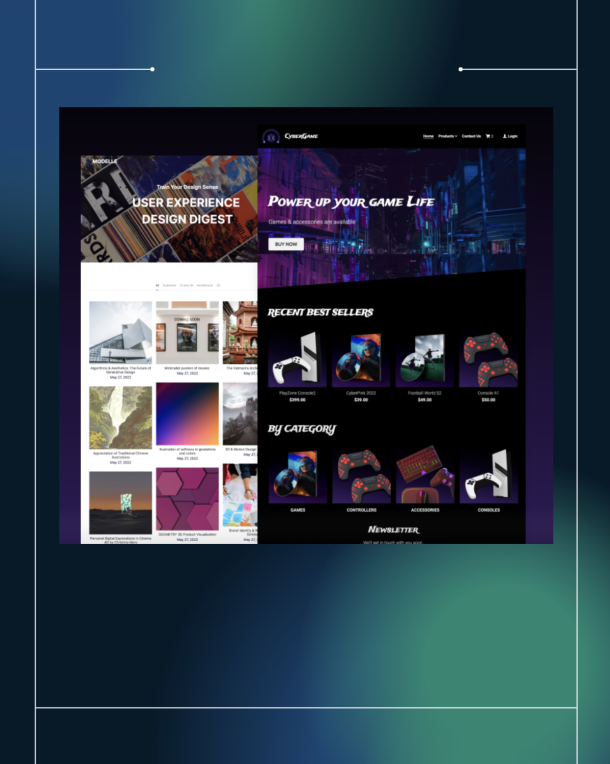In this Simvoly review, let’s see if this is the tool you should use for building websites, sales funnels, popups, and landing pages.
Update: Now, you can build sales funnels and landing pages and integrate with Zapier, web hooks, and API integration
You already know that developing websites is a painful process. The options are bewildering, indeed.
On top of that, you also have to develop sales funnels, landing pages and integrate them with all sorts of other tools to make your marketing work.
Normally, you have excellent tools available to help build landing pages and sales funnels. more often than not, most of these tools are specialized and built for a single purpose in mind.
For instance, Unbounce is used for building landing pages in sales funnels only. Leadpages, meanwhile, is also used to build landing pages and sales funnels with the addition of being able to build websites with the LeadPages Site Builder.
For building websites, you could take the WordPress route by using Elementor or Divi. Dive into the goodness of Webflow. Or choose to drag and drop with a builder like Simvoly, Mozello, Wix, or Weebly.
Of course, most of these tools help integrate with WordPress if that’s the CMS you are on.
What if you don’t want to use WordPress? What if you can’t afford the luxury of learning how to use Webflow?
That’s when it makes sense to use a tool like Simvoly.
Simvoly is built on top of HTML and CSS — it’s a drag-and-drop builder which helps to create websites, sales funnels, pop-ups, eCommerce stores, membership sites, and pretty much anything else.
Simvoly is not on WordPress nor does it require a learning curve — it’s visual, it’s drag-and-drop, and it’s built in a way that even a school-going student can use it (if ever).
Soon after you sign up and log in to Simvoly, you have plenty of options in the form of templates for websites, landing pages, membership sites, E-Commerce pages, and sales funnels.
Pick up one of the templates that you want to use for a particular design that you have in mind and go ahead and change the elements inside the template so that you have a page ready.
Simvoly also comes with the customer management feature or a CRM which helps you engage with your customers allow you to do messaging, apply tags, and more.
Simvoly gives you superhuman ability to develop websites, sales funnels, landing pages with the help of templates.
To develop websites, sales funnels, or landing pages with Simvoly, all you have to do is to pick a template depending on the kind of website or page that you want to develop. Then, make changes to your template using the visual drag-and-drop feature and you have your pages ready.

Given the huge set of templates for each category (websites, funnels, landing pages, blocks, and pop-ups), you’ll never find the lack of a template you want to use, of course.
How to Use Simvoly ( & When)
Simvoly is best used for the following use cases:
- Despite the fact that you can develop WordPress websites fast or some really smart marketing-ready website options, you might not want to deal with the complexity of WordPress — choose appropriate hosting, pick the right themes, design or customize themes, and more.
- You really love Webflow but you don’t want to learn how Webflow works or deal with that kind of complexity either.(but it’s not complex at all).
- You don’t want to use the ease and simplicity of other website builders such as LeadPages Site Builder, Weebly, or Mozello.
Simvoly is best for you if you want to develop websites, sales funnels, and landing pages fast without the need for integrations with email service providers ( at least, not yet).
Simvoly is also great for you if you are a developer, marketer, or a designer who wants to provide value-added or white-labeled services to your clients (why just build them websites when you can create complete sales funnels directly integrated with the websites you create to help clients get leads or make sales happen?).
As mentioned before, Simvoly is not on WordPress nor is it a fully functional HTML / CSS builder like Webflow.
Although it’s easy and simple to develop websites, sales funnels, landing pages, other pages with Simvoly, it doesn’t come with the expansive integration set that WordPress comes with. Even Webflow has several integrations (including being an official partner with Facebook Advertising).
At the moment, Simvoly doesn’t come with Zapier integration (not yet). I see no way of collecting all the leads that sign up on a particular popup inside Simvoly and push them to your usual email service platform.
Sign up with Simvoly see just how easy it is to develop websites, sales funnels, or landing pages now.

